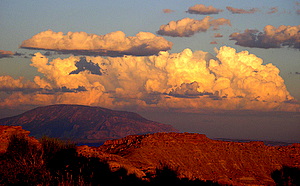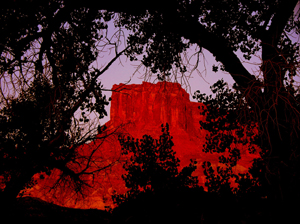Public announcements of how P members of ISO have voted on OOXML are now rolling in one at a time, and the trend thus far is meaningfully weighted towards "No with comments."
By my count, there are now four announced Yes votes, with comments (Germany, Poland, Switzerland and the United States), two abstentions (Australia and Sweden, the former due to a failure to achieve consensus, and the latter due to voting irregularities), and seven eight public No with comments votes: Brazil, China, Denmark, France, India, Ireland, and New Zealand. Updated: and Norway; tracking changes made below.
There is also a blog posting of a No with comments vote by Korea here. In addition, I expect at least Canada, Japan and the United Kingdom to announce "No with comments" today or tomorrow (that would take us up to 12), and that a number of additional countries will be revealed to have voted in a similar fashion when the official vote tally is announced by ISO in the next day or so.
The reason I say that in any other case the vote would be over now is because of the 11 countries that upgraded their status from Observer to Participating member status in the last few weeks. Without those extra 11 P countries, it would only require 10 votes to make an overall vote to approve impossible under the ISO rules (i.e., one more than 1/3 of the former 30 P members, minus the two that have abstained).
I've had several questions from journalists today who want to know how the votes will be counted on the OOXML vote, and what the distinction is between the influence of P (Participating) as compared to O (Observer) members of ISO. I had promised in a prior blog post to explain the rather complicated rules, and with voting now in its final stages, that time is now. While I'm at it, I'll also explain in greater detail why the surge in membership in SC 34 matters, and what will happen between now and the OOXML Ballot Resolution Meeting (BRM) in Geneva, Switzerland in February 2008.
First, here's the flow chart for how it will be determined whether the vote to approve OOXML has passed:
Earlier this week I reported that there were nine new, last minute "P" members of ISO [Updated: the number of upgrades is now eleven]. I also predicted that the number could rise. Well, now that we're down to the wire on the ISO/IEC vote on OOXML, it has. In the last three days, two more countries have made the list: Malta and Cote-d'Ivoire. That assumes that the list if up to the minute, and I won't be surprised to see the count rise by the end of the day.
Who else might join? Well, here's a clue. JTC1 also has a committee called "Document Descriptions and Processing Languages." That subcommittee is, not surprisingly, the task group responsible for addressing document formats, and its role regarding OOXML is not yet completed. I've pasted in the rule set at the end of this blog entry, but the bottom line is that SC 34 will be running the show on the resolution of the comments submitted along with the current votes, after they have been reconciled and responses suggested by Ecma.
Curiously enough, that subcommittee only had 23 members at the end of last year, and additions had been few and far between (three in in all of 2005, and only 2 in 2006). Now, it has 48 - in short, membership has more than doubled in the past year. Moreover, all but 1 of these 23 new members has joined since April - and 8 have joined thus far in August alone. But wait - there's more.
 There is a 100 mile long, unpaved track that circles the Island in the Sky District of Canyonlands National Park, called the White Rim Road. That circuit has become a favorite of mountain bikers, who noticed some years back that it was conveniently located not for from Moab, Utah, which is a popular jumping off point for such activities. But previous to their discovery, and still for all but a few months of the year, the White Rim Road is a largely deserted dirt and slickrock, four-wheel drive track with consistently world-class scenery, and plenty of privacy.
There is a 100 mile long, unpaved track that circles the Island in the Sky District of Canyonlands National Park, called the White Rim Road. That circuit has become a favorite of mountain bikers, who noticed some years back that it was conveniently located not for from Moab, Utah, which is a popular jumping off point for such activities. But previous to their discovery, and still for all but a few months of the year, the White Rim Road is a largely deserted dirt and slickrock, four-wheel drive track with consistently world-class scenery, and plenty of privacy.
It's also long, slow, bumpy and monotonous driving, when you're not looking at that scenery, but more on that later.
I'm pleased to note that the Linux Foundation (which I serve as Director of Standards Strategy, as well as legal counsel) has issued a statement calling for ISO/IEC JTC1 members to vote "No with Comments" on OOXML. That statement is here, and is also reproduced in full at the end of this blog entry. The decision to issue the statement follows on the heels of a rising crescendo of reports of last minute additions of individuals to National Bodies which is slanting voting results, and of a similar last minute upgrading of nine (or perhaps by now, more) nations to "P" status in ISO [Updated: the number is now ten - Malta is the new addition.] [Updated: the number is now eleven - Cote e'Ivoire is the latest addition. And see this blog entry for additional implicationss]
Why should or organization that was formed to promote and protect Linux be, to my knowledge, the first standards organization to call for a "no" vote on a document format standard? There are quite a few reasons, to my mind. And they are all extremely important.
First, document formats are relevant to Linux on the Desktop. You can find a page of quotes from the Linux Desktop Architects here, expressing their concerns. Second, Microsoft painted a target on Linux, OpenOffice (and, presumably, other office software suites that implement ODF), email and "other open source software" as a single grouping, when it began speaking of infringement of its 235 un-named patents. To me, this indicates that Microsoft sees Linux on the Desktop as the next big battle after server software, and is aligning Windows and OOXML in opposition to Linux and ODF as part of a single strategy.
I'm currently hiking and camping in Utah, which explains this off-topic post. I'll continue to cover big news when I'm able to access email, and will also upload and time-phase these entries for posting when I come into town for gas and supplies. To find more of this type of writing based on past trips, look to the folder link at left titled Not Here but There: A Wilderness Journal.
As I took my morning walk today and watched the canyons fill with sunlight and shadow, it occurred to me: If I ever become deaf, I would move to the desert.
Not so surprising, when you think about it. The desert is a place of great stillness, and a place that silence suits well. And after all, sound is the most evanescent of all sensations – here and then gone in an instant, leaving no trace. To be deaf in the desert would be to become more a part of it - a place that displays time and timelessness in its every ancient feature. The events or sensations of an instant – or indeed of a lifetime - don't cut much mustard in such a place as this.
But let me not mislead you: soundless does not equate to lifeless. The desert is a vibrant place, especially at night, as the tracks in the morning sand make clear. Even during the day, any walk through a brushy area will flush cottontails and jackrabbits, the former hopping tentatively away, the latter moving on with greater determination, though both noiselessly. Lizards, large and small, are ever present, and freeze or silently scamper off, depending on what you do. And birds, while scarce, are often in view if you look for them, if not in earshot.
Nor is the desert really silent, actually, though it certainly is in contrast to the rest of the world. So it must especially seem to those that visit the desert briefly in air-conditioned cars to snap a few pictures and then move on. Which is to say almost everyone, including most that move to the rapidly growing cities of the southwest, looking for inexpensive real estate and winter sun, and not for the desert itself.
I hadn't expected to be able to post anything more today, but when you're camped at 8,000 feet you can sometimes surprise yourself with a signal (uh, when on vacation that's not all good).
Be that as it may, this just in: China has unanimously voted "no, with comments" on OOXML. As I had noted in an earlier blog entry, China had been signalling some displeasure with Microsoft and OOXML in recent weeks, via Xinhua, the official government news agency, so this is not totally a surprise. If you can read Mandarin, the result was revealed here. I am told by a trusted source, that Co-Creative.org, an organization promoting open source made the disclosure, and that he confirmed the news with Mr. Ni Guangnan, of the fellowship of China Academy of Engineering, as source quoted in the earlier Xinhua stories.
As you will recall, the Executive Board (EB) of INCITS, the US voting body on OOXML in the ISO/IEC JTC1, posted two simultaneous, seven day written ballots - one to approve, with comments, and one to abstain, again with comments. The votes have now been received back. and are as follows:
- Abstain, with comments: Unanimous
- Approve, with comments: 12 for, 3 against, 1 abstaining (six with appended comments). The full results of this vote are here.
While the votes to approve are sufficient and that may well be the final result, the game is not necessarily over yet, as members will be free to change their votes at the August 29 if they so desire. The EB members that switched their votes in this ballot were NIST, the Department of Defense, and GS1 (Lexmark had switched from "No" to "yes" in a straw vote held at the last in-person resolution meeting).
I'm currently hiking and camping in New Mexico and Utah, which explains this off-topic post. I'll continue to cover big news when I'm able to access email, and will also upload and time-phase these entries for posting when I come into town for gas and supplies. To find more of this type of writing based on past trips, look to the folder link at left titled Not Here but There: A Wilderness Journal.
 Summer is the time of storms in the deserts of much of the Southwest, just as it is the time of intense heat. Except for its mountainous areas, the Southwest receives most of its meager precipitation in this way. The weather systems that form the thunderstorms of summer are thus vital to the cycle of desert life, and were they ever to fail, so, too, would most of what lives in these dry regions.
Summer is the time of storms in the deserts of much of the Southwest, just as it is the time of intense heat. Except for its mountainous areas, the Southwest receives most of its meager precipitation in this way. The weather systems that form the thunderstorms of summer are thus vital to the cycle of desert life, and were they ever to fail, so, too, would most of what lives in these dry regions.
There are two essential elements to the weather system that produces these storms. The first is the uneven heating of the desert surface by the sun, which creates variable updrafts that can rise high into the sky. And the second is a summer wind pattern that regularly carries moist air from the Gulf of Mexico into the Southwest – the technically accurate, but rather misleading name given to this element is the "Southwest Monsoon."
When desert updrafts meet this moist Gulf air, they carry it skyward into cooler altitudes, where the moisture condenses into white, decorative cumulus clouds reminiscent of cauliflowers. If the air is sufficiently moist, the clouds can grow in height, becoming "towering cumulus" clouds. And if the updraft is strong, the air more saturated with moisture, and the differential in temperature between warm updraft and cool upper air sufficiently great, then you have all of the necessary elements to create a cumulonimbus cloud - also known as a potential thunderstorm.
 There is a 100 mile long, unpaved track that circles the Island in the Sky District of Canyonlands National Park, called the White Rim Road. That circuit has become a favorite of mountain bikers, who noticed some years back that it was conveniently located not for from Moab, Utah, which is a popular jumping off point for such activities. But previous to their discovery, and still for all but a few months of the year, the White Rim Road is a largely deserted dirt and slickrock, four-wheel drive track with consistently world-class scenery, and plenty of privacy.
There is a 100 mile long, unpaved track that circles the Island in the Sky District of Canyonlands National Park, called the White Rim Road. That circuit has become a favorite of mountain bikers, who noticed some years back that it was conveniently located not for from Moab, Utah, which is a popular jumping off point for such activities. But previous to their discovery, and still for all but a few months of the year, the White Rim Road is a largely deserted dirt and slickrock, four-wheel drive track with consistently world-class scenery, and plenty of privacy. 
 Summer is the time of storms in the deserts of much of the Southwest, just as it is the time of intense heat. Except for its mountainous areas, the Southwest receives most of its meager precipitation in this way. The weather systems that form the thunderstorms of summer are thus vital to the cycle of desert life, and were they ever to fail, so, too, would most of what lives in these dry regions.
Summer is the time of storms in the deserts of much of the Southwest, just as it is the time of intense heat. Except for its mountainous areas, the Southwest receives most of its meager precipitation in this way. The weather systems that form the thunderstorms of summer are thus vital to the cycle of desert life, and were they ever to fail, so, too, would most of what lives in these dry regions.